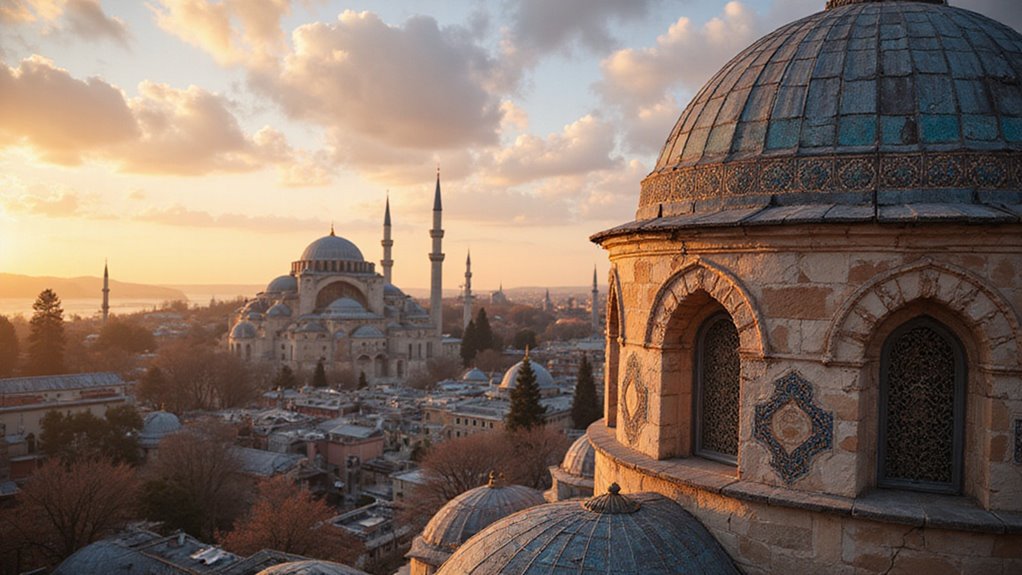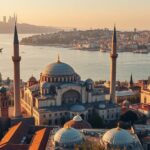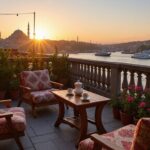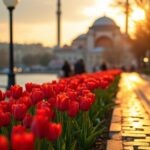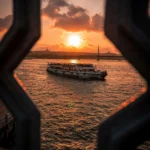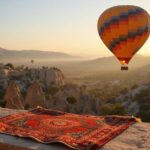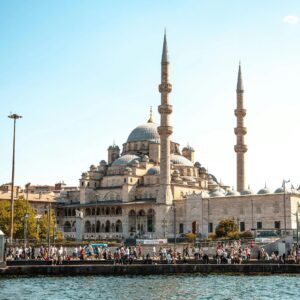Süleymaniye Mosque and Chora Church place Ottoman grandeur beside Byzantine jewel-like decoration, and you should visit both. You’ll reach them easily by T1 tram, then expect short uphill walks, buy timed tickets, and bring comfortable shoes. At Süleymaniye admire Mimar Sinan’s soaring domes, İznik tiles, tomb complex and panoramic Golden Horn views. At Chora inspect stunning mosaics, fresco cycles, intimate aisles and muted lighting that protect fragile gold tesserae. Scroll down to learn more today.
Key Takeaways
- Süleymaniye, designed by Mimar Sinan, exemplifies Ottoman monumental symmetry, seismic engineering, and integrated civic complex planning.
- Chora (Kariye) Church showcases exquisite Byzantine mosaics and frescoes narrating biblical scenes with gold tesserae and vivid blues.
- Süleymaniye’s interior features İznik tilework, large calligraphic panels in Thuluth script, floral arabesques, and restrained color harmonies.
- Chora’s compact plan, narrow aisles, and subtle lighting create an intimate, contemplative setting for close mosaic viewing.
- Both sites face conservation challenges; visit mornings, use combined/timed tickets, and expect walking on uneven historic streets.
Historical Background of Süleymaniye and Chora

Süleymaniye Mosque sits majestically on Istanbul’s Third Hill, and you’ll want to plan at least two hours for a thorough visit. Chora Church offers intimate mosaics and frescoes that show deep religious significance and Byzantine artistry. Visit both sites by tram and bus, plan for walking, and wear comfortable shoes for uneven terrain.
Süleymaniye Mosque guides explain the complex history, highlight cultural influences, and point out notable viewpoints. Chora Church signage offers translations, clear timelines, maps, and audio options to support your independent exploration. Visit early to avoid crowds, reserve tickets online when possible, and allow time for photography and reflection.
Süleymaniye Mosque plazas, courtyards, markets, and views reward patient visitors with expansive city panoramas. Chora Church interiors feature vivid scenes, intimate scale, detailed patterns, and spiritual context for contemplative tourists. Visit nearby transport hubs, cafes, restrooms, and information centers to streamline your day. Chora Church enriches freedom.
Patrons, Architects, and Builders
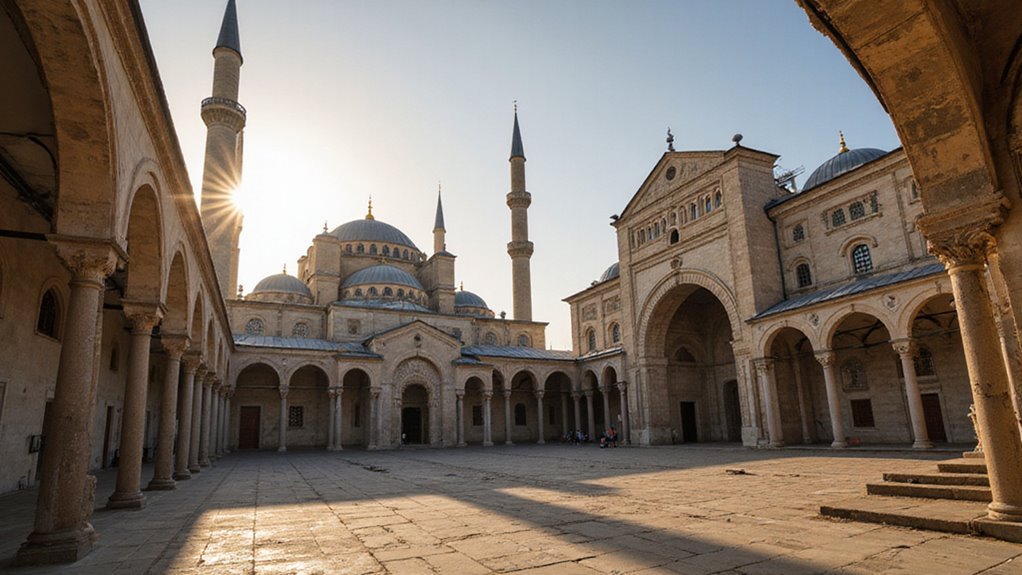
Istanbul’s historic districts showcase patrons, architects, and builders whose vision shaped grand mosques, intimate churches, and bustling markets. Süleymaniye invites you to join guided tours, learn about domes, and admire Ottoman stone and brick building materials. Chora urges you to visit mosaics, plan for limited hours, and enjoy Byzantine marble and recycled spolia.
Tram access makes travel easy, expect short walks uphill, carry water, and buy combined tickets when possible. Sultan Suleiman commissioned master architect Mimar Sinan, his bold designs used advanced construction techniques that balanced beauty with seismic resilience. Wealthy patrons funded intricate mosaics and marble, you’ll see patron inscriptions and dedicatory art in many spaces.
Local guides explain restoration, conservation methods, and the modern care of fragile frescoes. Nearby cafes, museums, shops, and ferry connections help you extend visits, so schedule time, and book ahead. From Sultanahmet, catch trams early to avoid crowds, bring shoes, water.
Site Layout and Urban Context
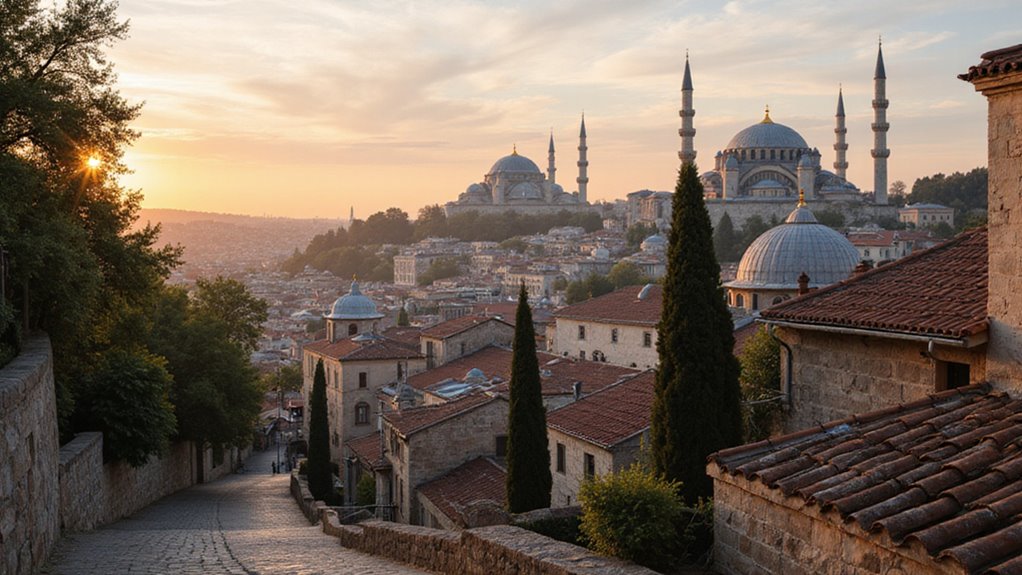
From Sultanahmet, you can reach both sites easily, so plan which to visit first to save time and energy.
Süleymaniye sits atop a hill, offering sweeping views of the Golden Horn and city. Chora perches in the Balat neighborhood, surrounded by narrow streets, historical houses, small cafés.
Walking connects both sites through public transport hubs, plazas, and pedestrian-friendly routes. Use tram lines, buses, or ferries to shorten transfers, then enjoy direct pedestrian access to courtyards.
Consider timing visits for mornings, when crowds thin, temperatures feel pleasant, and photo opportunities multiply. Local wayfinding signs, information boards, and friendly staff improve urban integration and visitor orientation.
Bring comfortable shoes, water, and a charged phone for maps, ticket apps, and photos. Expect modest climbs at Süleymaniye, and steep, cobbled lanes around Chora, manageable with breaks.
Plan routes, reserve time, and combine nearby markets, museums, viewpoints for a liberating, efficient day experience.
Architectural Plans and Spatial Organization
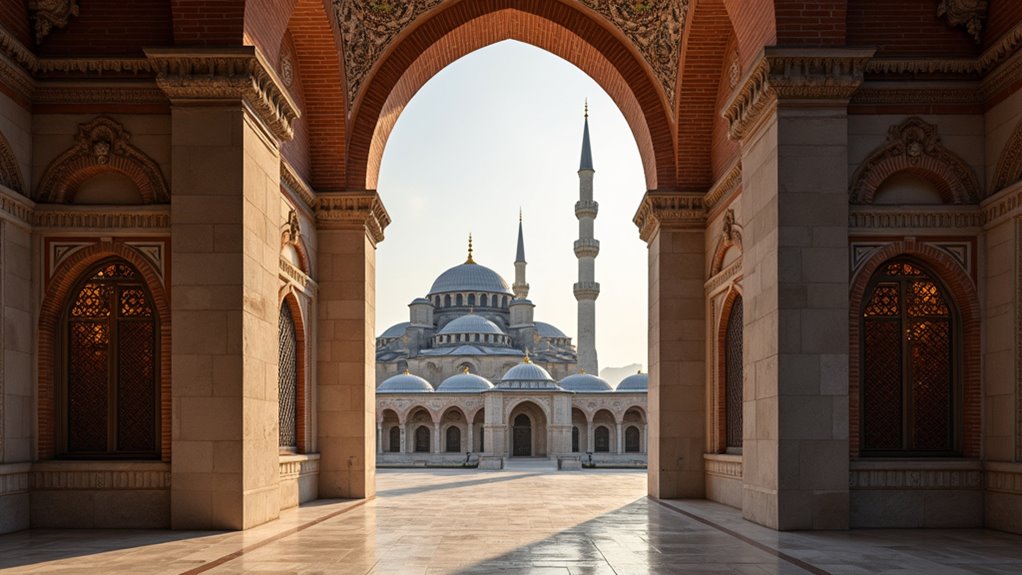
While Chora Church‘s compact footprint reveals a layered, Byzantine plan that invites close inspection, you’ll notice how narrow aisles, ornate mosaics, and intimate chapels guide movement through sacred spaces. Chora Church offers clear circulation, tight axial routes, small narthexes, and focused devotional stops for attentive visitors.
Süleymaniye Mosque presents broad courtyards, axial symmetry, prayer hall progression, and accessible entrances from surrounding streets. Visit the museums, grab transit details at kiosks, check opening times, and plan morning visits often.
Approach circulation with attention to material selection, contrasting stone floors, warm marble steps. Walk between galleries slowly, use handheld maps, follow signage, and enjoy layered ornamentation thoughtfully.
Süleymaniye Mosque recommends early arrival, nearby tram stops, taxi stands, secure lockers, and accessible restrooms. Chora Church emphasizes subtle lighting design, filtered daylight, focused lamps on mosaics, and contemplative ambience for photography.
Visit both sites, combine routes, savor cafes, and allocate two hours.
Dome Engineering and Structural Innovations
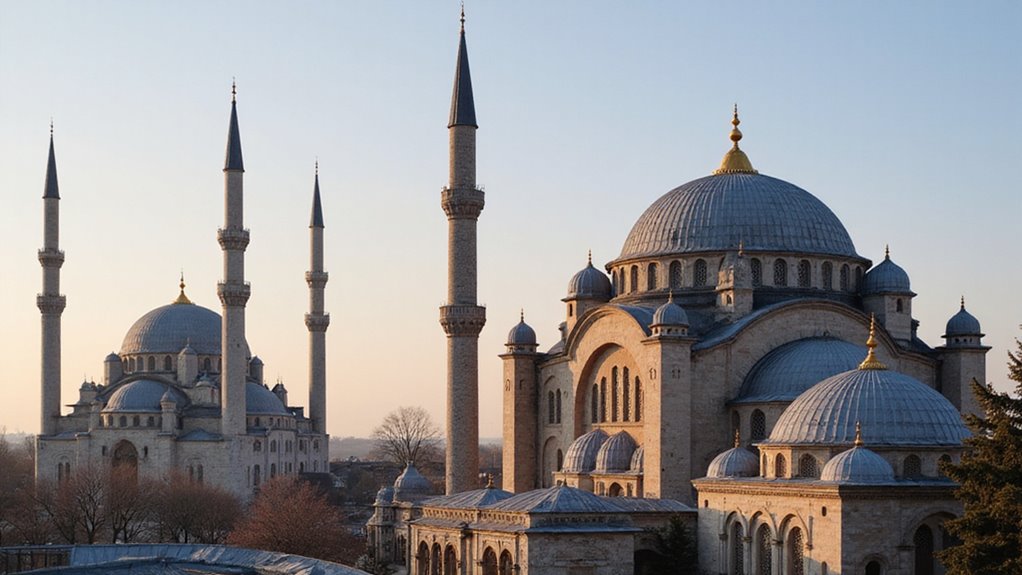
Süleymaniye Mosque draws you into a masterful dome system, pairing a large central dome with cascading semi-domes and robust buttresses. Istanbul welcome centers guide your visit, offering maps, transit tips. Süleymaniye’s engineers applied clever masonry geometry and hidden supports to enhance seismic resilience and longevity.
Public transport stops nearby, trams and buses connect easily. Chora Church complements your route, its domed spaces showing different structural solutions and refined acoustic design. Ticket counters give timed entries, reducing queues.
Guided tours explain load distribution, pendentives, buttressing, and materials, helping you appreciate bold engineering decisions. Nearby cafes provide breaks, views, and local snacks. Photography areas are marked, so you can capture soaring interiors, geometric patterns, and atmospheric light safely.
Seasonal weather affects acoustics and comfort. Visitor centers advise on best times, sound-sensitive events, accessibility, and combined tickets for broader exploration. Sultanahmet tram stop connects you to historic sites, markets, nearby museums.
Exterior Form, Facades, and Courtyards
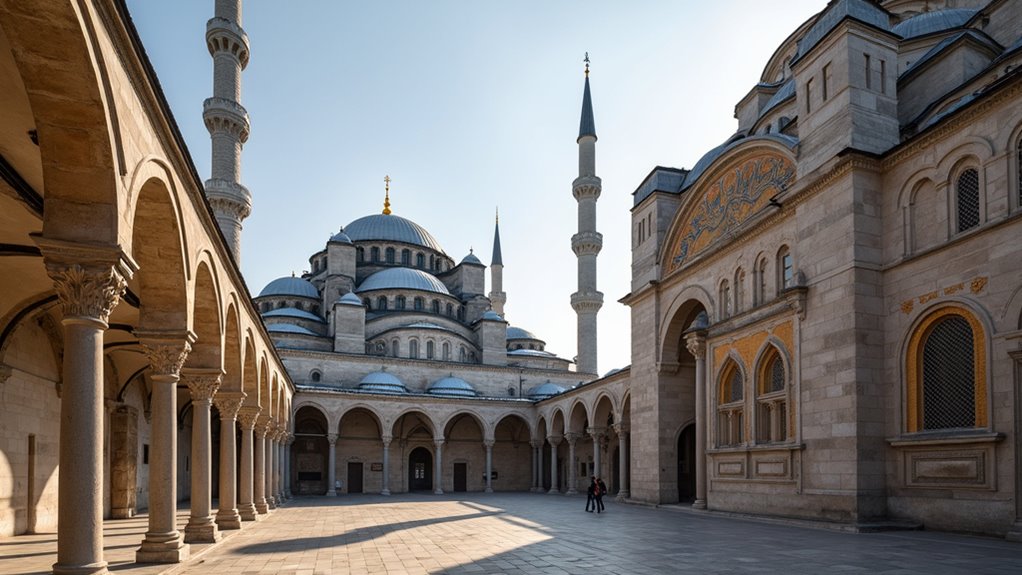
Istanbul’s Süleymaniye complex and Chora Church present contrasting exterior forms, facades, and serene courtyards. Süleymaniye offers monumental domes, soaring minarets, balanced portals, and symmetrical facades that command the skyline. Chora Church displays a compact silhouette, modest towers, plain brickwork, and intimate geometric courtyards for quiet reflection.
Sultanahmet suggests arriving early, taking tram T1, buying tickets onsite, and pairing visits with Hagia Sophia, Topkapi Palace. Take a ferry to Eminönü, walk uphill to Süleymaniye, enjoy panoramic views, and photograph facades at golden hour. Use public transit to reach Edirnekapı, plan thirty minutes for Chora Church, carry change, reserve time for courtyard.
Süleymaniye invites you to explore outer colonnades, gardens, tombs, and vantage points for sweeping city vistas. Chora recommends modest dress, comfortable shoes, respectful behavior, and quiet appreciation of architectural composition. Take guided tours for context, avoid peak crowds, combine morning and late afternoon visits, and savor peaceful courtyards.
Interior Decoration: Mosaics, Frescoes, and Tilework
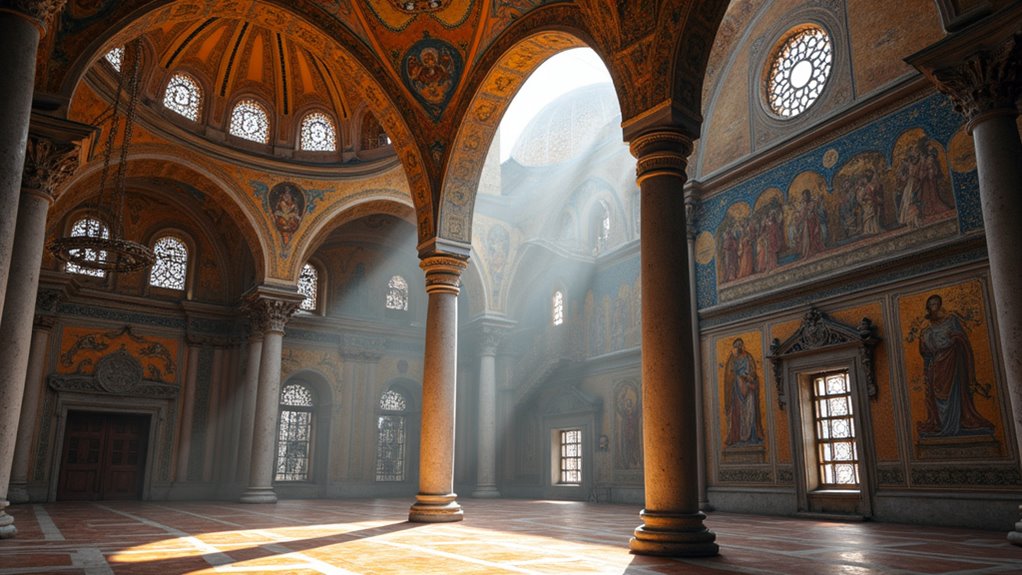
Chora Church’s mosaics glow with gold tesserae, revealing intimate biblical scenes and lively saints. Chora Church invites you to study the frescoes closely, noting delicate faces and serene gestures.
Süleymaniye Mosque offers tilework panels, vibrant İznik patterns, and well-preserved geometric borders. Visit the Chora, then plan a short walk, catch a tram, or use taxis for quick transfers.
Chora Church demonstrates lighting effects that animate scenes, shifting mood as daylight moves. Süleymaniye Mosque encourages exploration of domes, aisles, and tile-clad mihrabs with respectful observation.
Pack comfortable shoes, carry water, and book timed tickets in advance to avoid lines. Chora Church frames theological narratives with symbolic motifs and careful composition, guiding your attention.
Süleymaniye Mosque provides clear signage, multilingual guides, and nearby cafés for breaks. Explore nearby attractions, Topkapi Palace, Hagia Sophia, and bustling Grand Bazaar, making efficient day plans.
Visit early mornings to avoid crowds and capture photographs.
Calligraphy, Ornamentation, and Color Palette

When you visit the Süleymaniye complex, you’ll notice sweeping calligraphic bands in elegant thuluth script, guiding the eye along domes and arches. Süleymaniye presents bold inscriptions, floral arabesques, geometric patterns, restrained color fields.
Chora Church offers intricate medallions, delicate border motifs, vivid rich blues and golds. Take the tram to Eminönü, walk uphill, expect about twenty minutes, enjoy views.
Sultanahmet visitors should buy combined tickets, arrive early, avoid crowds. Süleymaniye shows Ottoman taste infused with secular influences and devotional intent.
Chora Church displays Byzantine palettes that convey symbolic meanings and narrative clarity. Explore nearby bazaars, cafes, museums, plan two to three hours for both sites.
Süleymaniye benefits from natural light, careful restoration, conserved pigments. Chora Church rewards patient viewing, close-up study, photography where allowed.
Consider joining a guided tour, ask about conservation efforts, learn about craftsmen, and note recommended photo times for best color viewing, and enjoy responsibly.
Funerary Complexes, Tombs, and Auxiliary Buildings
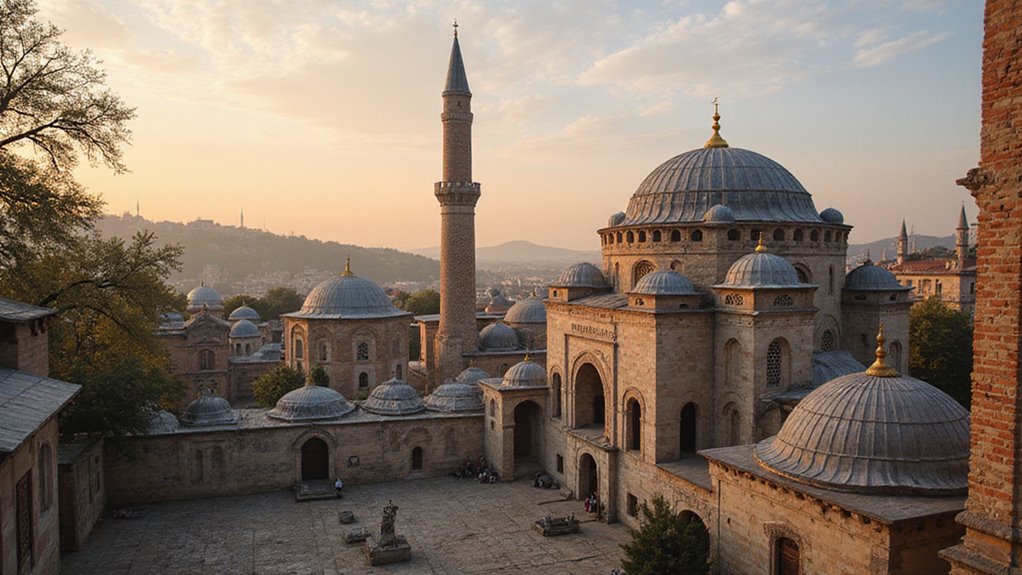
Explore Süleymaniye’s funerary complex to see the sultan’s türbe, family tombs, imaret, and sebil standing close to the mosque. Süleymaniye courtyard guides you to monumental tombs, shaded paths, and calm views.
Süleymaniye hill invites you to pause and learn about Ottoman funeral rituals, and nearby panels explain burial customs. Süleymaniye complex is reachable by tram, bus, taxi, with clear signage from Süleymaniye stop.
Süleymaniye security checks are quick, and opening hours fit morning visits. Süleymaniye tours recommend wearing respectful clothing, carrying water, bringing a camera for architectural details.
Süleymaniye terraces offer panoramic skyline views, quiet corners, and interpretive signs about historical patrons. Süleymaniye imaret and sebil are accessible, and staff provide context for social services, endowments, and funerary practices.
Süleymaniye visit rewards curious travelers seeking freedom, meaningful history, and thoughtful reflection near an iconic mosque. Süleymaniye staff can arrange guided access, printed guides, and multilingual brochures for you.
Conservation, Restoration, and Preservation Challenges
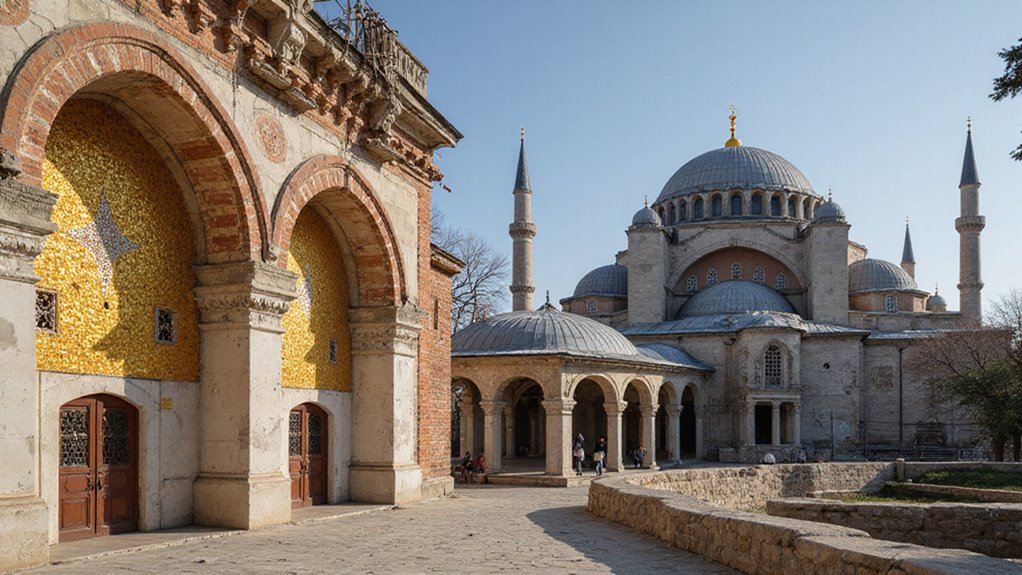
Süleymaniye faces ongoing conservation and restoration challenges that visitors should understand and respect. Süleymaniye guides often explain visible wear, delicate stonework, and scaffolded roof repairs at close range.
Chora offers careful signage about mosaics, restricted viewing, and timed entry to limit crowd impact. Visit the nearby tram stop, plan for stairs, and allow extra time for ticket lines when scheduling your day.
Explore outdoor courtyards with awareness of environmental factors like pollution, humidity, and seismic risk. Walk the perimeter slowly, follow barriers, and avoid touching fragile surfaces to help protect art.
Take note of conservation funding issues reported on site, donate when possible, or support reputable local foundations for ongoing work. Süleymaniye and Chora provide clear visitor rules, guided tours, multilingual panels, and helpful staff to guarantee meaningful, responsible visits.
Take public transit, use comfortable shoes, carry water, bring a camera, and check seasonal hours before departure daily.
Comparative Analysis: Byzantine vs. Ottoman Approaches

Istanbul’s historic sites contrast Byzantine mosaic intricacy with Ottoman monumental architecture, so you’ll learn differing conservation philosophies firsthand. Visit Süleymaniye to study Ottoman scale, simplified decoration, pragmatic construction techniques, and civic planning.
Visit Chora Church to appreciate dense Byzantine mosaics, chapels, layered religious symbolism, and delicate materials. Explore conservation priorities, compare material choices, note mortar composition, tile methods, and documentation.
Take guided tours for context, you should ask about reinforcement, seismic retrofits, and heritage regulations. Walk between Süleymaniye and Chora to gauge context, transit times, nearby attractions.
Take public transit routes, use trams, buses, ferries, plan time, purchase Istanbulkart, and verify schedules. Visit nearby attractions, Hagia Sophia, Topkapı Palace, and local neighborhoods for fuller historical perspective and services.
Explore interpretive panels, audio guides, specialists’ talks, and explanations to deepen understanding of restoration. Süleymaniye management suggests timed visits, Chora limits numbers, so plan ahead, buy tickets to avoid lines.
Practical Visitor Information and Photography Tips

Chora Church sits on a steep street, so you’ll plan extra walking time, footwear, and camera gear accordingly. Süleymaniye Mosque welcomes you with grand courtyards, shaded arcades, impressive views of the city.
Walk briskly between sites, carry water, a light jacket, maps, and proof of purchase for museum access. At Chora, study visitor etiquette, remove hats, speak quietly, and follow signage for sensitive mosaics.
Bring a small tripod, fast lenses, batteries, and respect photography rules that protect artworks and fellow visitors. Süleymaniye offers prayer times, modest dress requirements, and quiet zones, so plan visits outside peak worship hours.
Purchase combined tickets, check opening hours online, and arrive early to avoid crowds and rushed viewing. Use guided tours for deeper context, ask knowledgeable guides, photograph details respectfully, and take notes for remembrance.
Plan flexible days, enjoy panoramic terraces, savor local cafés, and protect freedom to explore safely and thoughtfully.
Frequently Asked Questions
Any Myths or Legends Tied to Süleymaniye or Chora?
Yes, you’ll hear mosque legends about hidden tombs and protective saints, and church myths of miraculous mosaics; you’ll feel a free-spirited thrill exploring overlapping faith, art, and whispered stories that resist easy explanation and wonder.
Have These Sites Appeared in Films or Popular Media?
You’d think entire world stops for them, and yes, they’ve appeared in historic films and cultural depictions; you’ll spot iconic shots, don’t be surprised if they stir your wanderlust and fuel your craving for freedom.
Do Contemporary Turkish Artists Reference These Buildings Today?
Yes, you’ll see contemporary Turkish artists drawing artistic inspiration from these monuments, creating bold modern interpretations that remix tradition and freedom, letting you encounter heritage reimagined through painting, installation, street art, photography, and performance today.
Are Traditional Tile-Making Techniques From Chora Still Practiced Locally?
Yes: preserved, practiced, passed on. You’ll find local workshops sustaining tile preservation and traditional craftsmanship, where you’ll learn techniques, share free creative choices, and follow ancestral methods while adapting styles to modern, liberated tastes today.
Do Either Site Host Musical or Cultural Performances Occasionally?
Yes, you’ll occasionally find concert events and cultural festivals held near or within these sites, letting you freely enjoy music and heritage; you can attend special performances during restorations, holidays, or curated cultural programs also.


